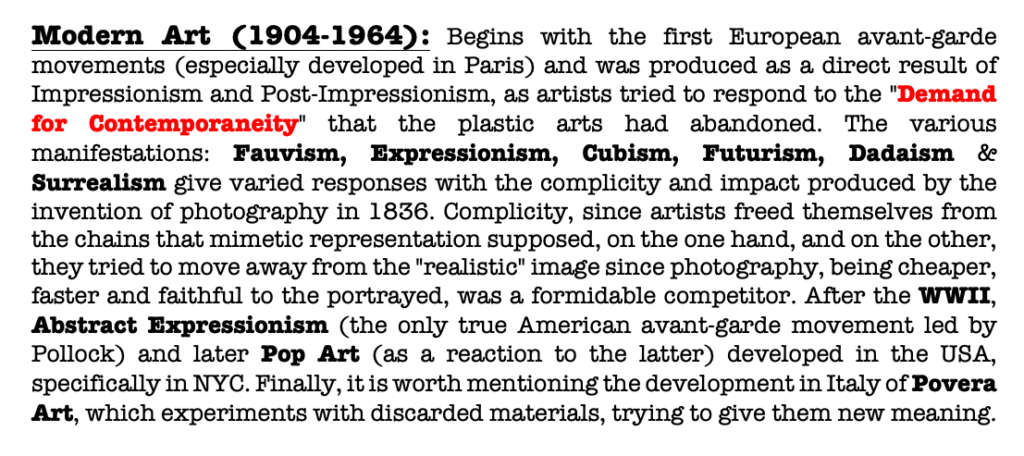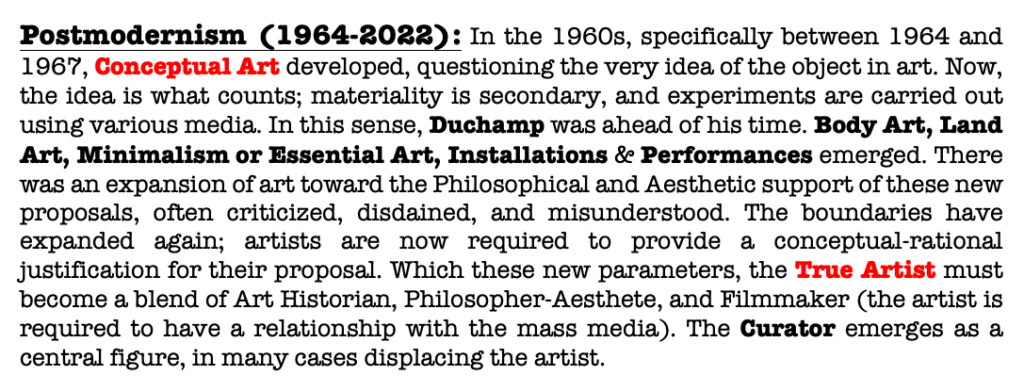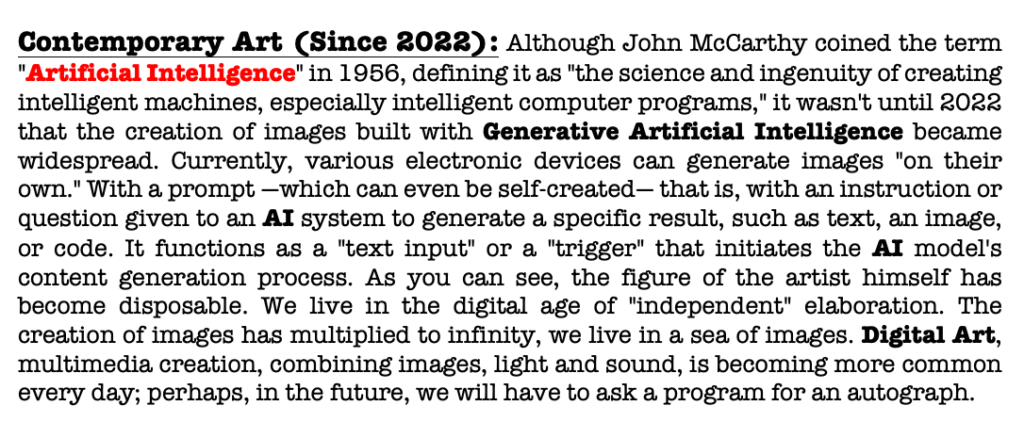



Modern Art (1904-1964): Begins with the first European avant-garde movements (especially developed in Paris) and was produced as a direct result of Impressionism and Post-Impressionism, as artists tried to respond to the “Demand for Contemporaneity” that the plastic arts had abandoned. The various manifestations: Fauvism, Expressionism, Cubism, Futurism, Dadaism & Surrealism give varied responses with the complicity and impact produced by the invention of photography in 1836. Complicity, since artists freed themselves from the chains that mimetic representation supposed, on the one hand, and on the other, they tried to move away from the “realistic” image since photography, being cheaper, faster and faithful to the portrayed, was a formidable competitor. After the WWII, Abstract Expressionism (the only true American avant-garde movement led by Pollock) and later Pop Art (as a reaction to the latter) developed in the USA, specifically in NYC. Finally, it is worth mentioning the development in Italy of Povera Art, which experiments with discarded materials, trying to give them new meaning.
Postmodernism (1964-2022): In the 1960s, specifically between 1964 and 1967, Conceptual Art developed, questioning the very idea of the object in art. Now, the idea is what counts; materiality is secondary, and experiments are carried out using various media. In this sense, Duchamp was ahead of his time. Body Art, Land Art, Minimalism or Essential Art, Installations & Performances emerged. There was an expansion of art toward the Philosophical and Aesthetic support of these new proposals, often criticized, disdained, and misunderstood. The boundaries have expanded again; artists are now required to provide a conceptual-rational justification for their proposal. Which these new parameters, the True Artist must become a blend of Art Historian, Philosopher-Aesthete, and Filmmaker (the artist is required to have a relationship with the mass media). The Curator emerges as a central figure, in many cases displacing the artist.
Contemporary Art (Since 2022): Although John McCarthy coined the term “Artificial Intelligence” in 1956, defining it as “the science and ingenuity of creating intelligent machines, especially intelligent computer programs,” it wasn’t until 2022 that the creation of images built with Generative Artificial Intelligence became widespread. Currently, various electronic devices can generate images “on their own.” With a prompt —which can even be self-created— that is, with an instruction or question given to an AI system to generate a specific result, such as text, an image, or code. It functions as a “text input” or a “trigger” that initiates the AI model’s content generation process. As you can see, the figure of the artist himself has become disposable. We live in the digital age of “independent” elaboration. The creation of images has multiplied to infinity, we live in a sea of images. Digital Art, multimedia creation, combining images, light and sound, is becoming more common every day; perhaps, in the future, we will have to ask a program for an autograph.
Leave a Reply